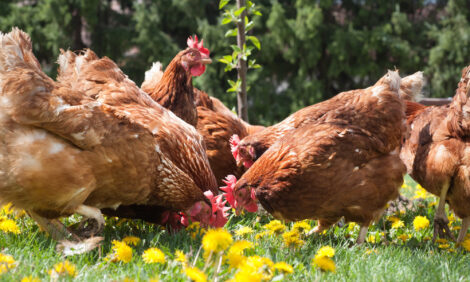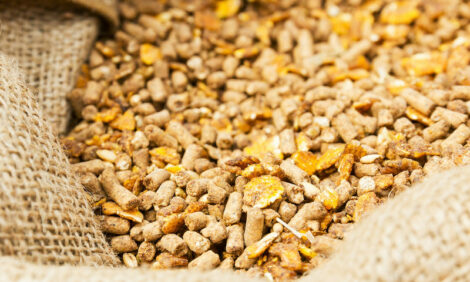



Research into the Prevention of Severe Feather Pecking
THE NETHERLANDS - Wageningen University is looking into what farmers can do to prevent Severe Feather Pecking (SFP) in laying hens when beak-trimming is banned.From 2018 onwards, it will be forbidden by law to cut the beaks of laying hens, which is presently a preventive measure against severe feather pecking.
What can laying hen farmers do to prevent Severe Feather Pecking (SFP)? In all segments of the egg production chain, from egg to layer, there are possibilities to decrease SFP. “It's all about the chain approach”, concludes Wageningen University Research researcher Elske de Haas. “From genetic choices to housing: avoid excessive fear in the birds, as high fearfulness is a big risk factor for SFP.”
From 2018 onwards, it will be forbidden by law to cut the beaks of laying hens, which is presently a preventive measure against SFP. But, what are the consequences of imposing such a ban, and what can farmers otherwise do to prevent SFP? To find the answers to these questions Wageningen UR researcher Elske de Haas investigated the causes of SFP, paying special attention to the genetics and maternal and early life influences.
A study with Parental Stock (PS) indicated differences between flocks in sensitivity to stress. Based on her experimental works she found between-group differences in fearfulness and stress sensitivity. For example, a stressful hen can influence other hens. Meaning, as De Haas observed, that certain groups, particularly on farm, develop SFP due to high fear and stress levels.
On top of that, she found that PS had an effect on behavioural development in their chicks, without mother hens being in close proximity (PS and rearing flock are completely separate from one another).
These maternal effects were found only in a commercial white hybrid when compared to a commercial brown hybrid. Specifically, it was found that high levels of maternal corticosterone, feather damage and serotonin were related to offspring SFP and fearfulness at one and five weeks of age.
Dr de Haas said: “These findings have long been neglected in addressing SFP in commercially kept laying hens,” adding that they offer potential opportunities to reduce SFP by addressing stress and fear in PS flocks.
Housing and Litter
Next to the genetic sensitivity for SFP, Dr de Haas discovered that housing and litter conditions are also influencing factors. Problems with feather damage in the laying phase can have their origins in the preceding rearing phase, when young chicks are raised to pullets soon to lay eggs. For example the housing system and litter availability are important issues in SFP.
If during the early weeks of life, the young chicks experience a discontinuity in litter supply SFP can develop, and also feather damage and high fearfulness. Dr de Haas found that the commercial brown hybrid is more sensitive than its white counterpart.
She said: “These results are important for designing measures to prevent the development of SFP, which may require a different approach in brown and white flocks.”
However, for both crosses it was found that large group housing, floor or plateau housing may provide risks during the rearing and laying phase, while an amended management incorporating variable pecking options and fear reducing measures (i.e. radio, introduction of roosters) can reduce SFP.
With her practical solutions, Dr de Haas provides farmers with tools to limit the development of SFP in all segments of the chain in preparation for the ban on beak trimming in 2018.









